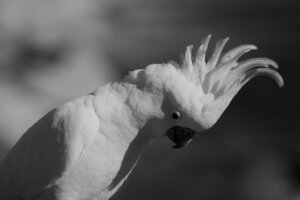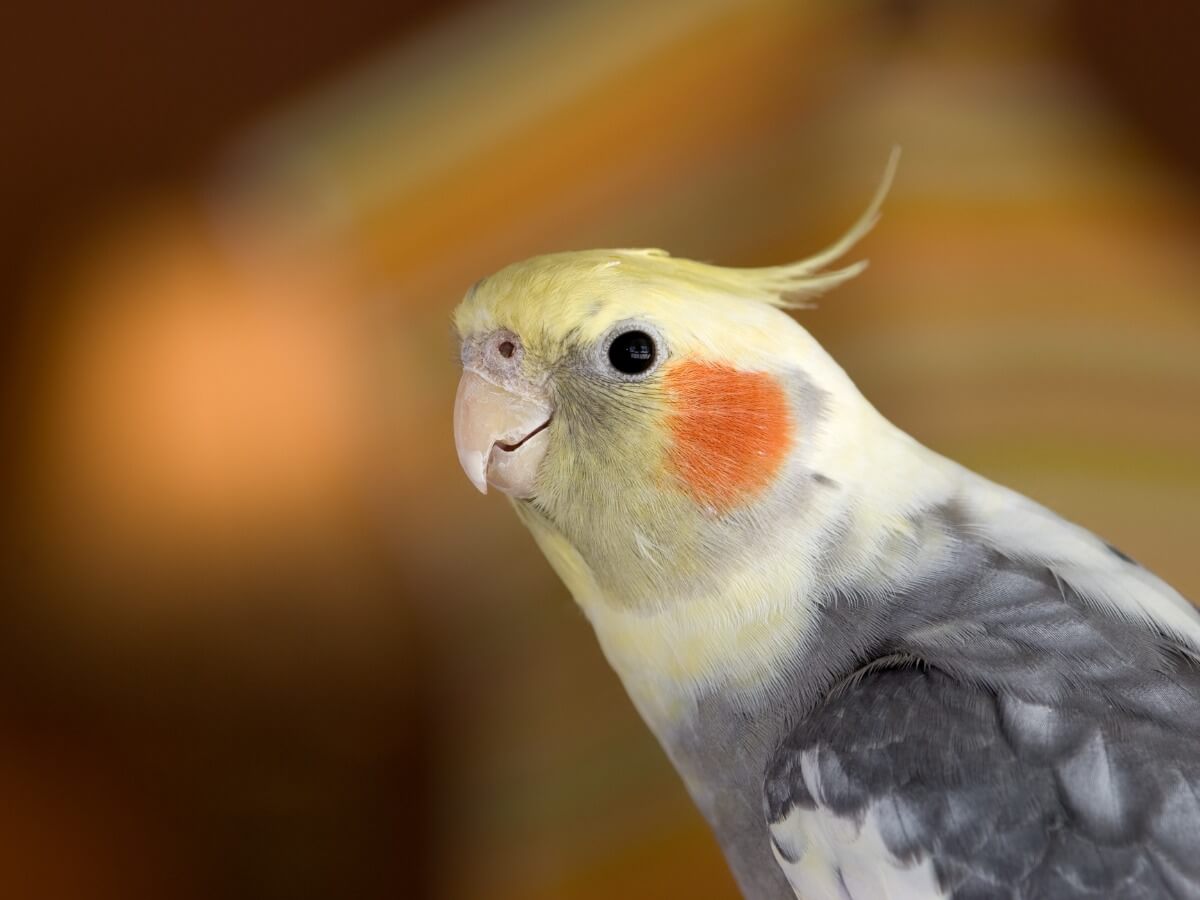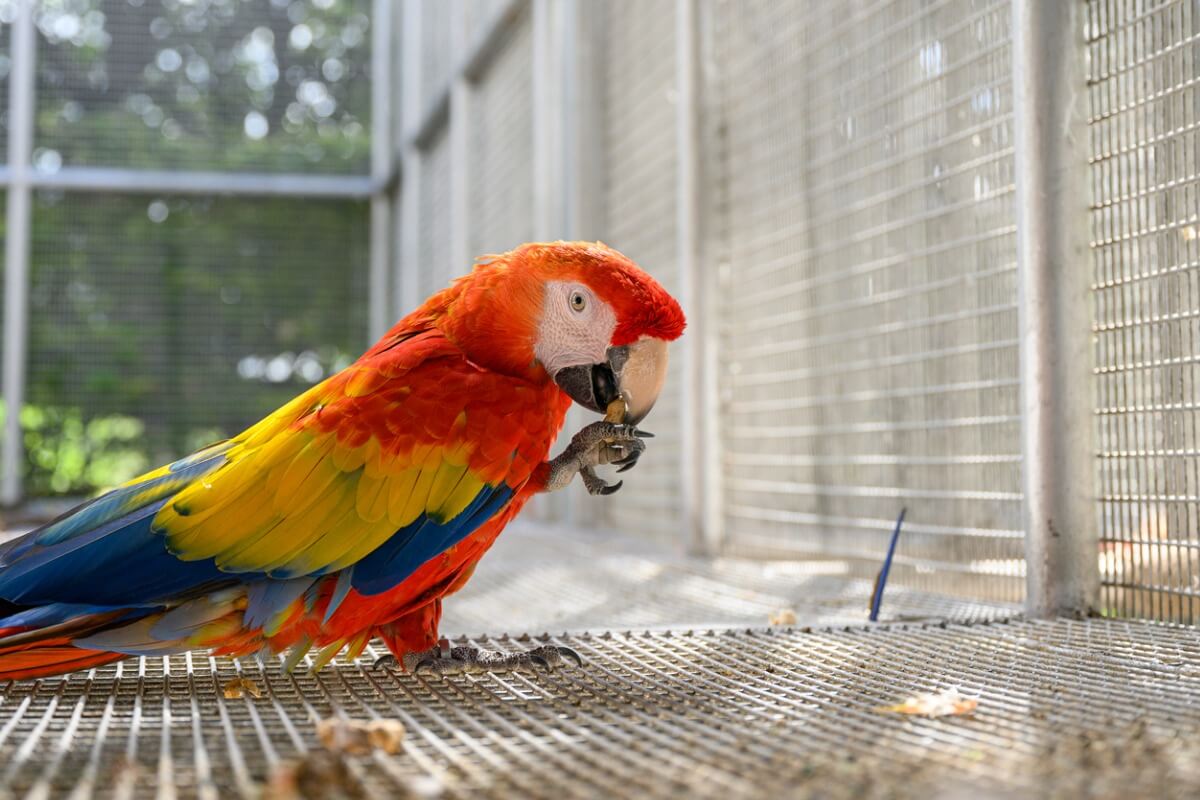Stress in Domestic Birds: Causes, Symptoms and Solutions

Birds are designed to take to the skies in freedom, and they may have problems adapting to a cage. If you have caged birds at home, then you need to know about the signs of stress in domestic birds, because detecting it is essential to ensure their welfare.
The information you’ll find here is of a general nature, and it’s valid for any species of bird. Stress can trigger or aggravate many diseases, so take good note of everything you need to know in order to recognize and alleviate it.
Causes of stress in domestic birds
Domestic birds are animals that need a safe and stable environment in order to feel calm. As prey in their natural environment, they relate changes in their habitat as signs of danger, which causes them stress. But what changes can there be in a house that seem dangerous to them? Here are the most common examples:
- Moving house: You aren’t the only one who suffers stress when moving house. Your bird will also be alarmed if its whole routine and environment are abruptly disrupted.
- Change of family: Many birds form very deep bonds with their guardians. If they have no choice but to move in with other people, they’ll be stressed by having to form a new relationship with a stranger and will miss their other family.
- The arrival of a new family member: Human or not, the introduction of new animals in the home is usually a cause of stress in the bird because of the change of routine that this entails.
- External noises: Thunder, construction or heavy traffic are some examples of sudden sounds that can frighten your bird. If they’re constant, they’ll create oxidative stress.
- Presence of predators and other animals: For example, even if an eagle or raccoon doesn’t have access to the house, their looking in through the window is a source of stress for your bird. Domestic cats can also be perceived as threats.
- Changes in routine: This could be your routine as well as the bird’s. They have a hard time adapting to new elements in their day-to-day life or changes in schedules.
Other small changes and factors can also alter a bird’s peace of mind. Some such examples are changing the color of the walls, different artificial light cycles, introducing a new element in their cage, or even you painting your nails! Whenever you make a change in the environment or routine, be alert and record any changes in your bird’s behavior.

How do I know if my bird is stressed?
There are a number of physical and psychological symptoms of stress common to most birds. This basic information is essential for early recognition of the disorder. These are the most common clinical signs:
- Feather stress lines: These are linear spots on the feathers caused by the presence of feather-eating mites and nutritional deficiencies. These deficits are the result of stress-induced changes in the bird’s physiology.
- Feather plucking: Excessive preening or self-injury are common signs that a bird is highly stressed.
- Aggression towards other animals or the owner: This behavior is also indicative of physical illness, so a visit to the vet is recommended to find the cause.
- Loss of appetite: The bird stops eating, along with the other signs, is also included in a picture of stress. Like the previous point, this behavior is part of the symptoms of physical illness.
- Changes in vocalizations: especially in the case of psittacine birds, screeching louder, more often or on the contrary to stop vocalizing completely are clear signs of stress.
- Repetitive behavior: behaviors that are repeated continuously and do not have a goal are called stereotypies. These are mainly the result of lack of stimulation and stress. They can be movements, vocalizations or habitual behaviors that are repeated more than necessary, such as grooming.
- Fear: If the bird suddenly becomes afraid of things it wasn’t afraid of before, it may be because it’s in a state of continuous stress and is more sensitive. If it resists handling that it previously enjoyed, it may be a change in your appearance that triggers the fear.
- Boredom: No one likes to be idle, especially if they live in a cage. If the bird doesn’t have enough mental stimulation, it’ll suffer from stress.
Solutions to stress in pet birds
Once the stressor affecting the bird has been found, the first thing to do is to remove it from its environment so that it ceases to have an effect. The next step is to diagnose the abnormal behavior it’s displaying. Is it scratching itself? Does it refuse to eat? Each of the derived disorders has a specific treatment, so you need to distinguish between them.
While you treat these problems together with your vet, it’s important that you carry out certain actions that will help alleviate the bird’s stress. These are listed below:
- Don’t shout or make loud noises near the bird, as this only adds to its stress.
- Avoid sudden movements, especially when approaching the bird. If the bird is afraid, you should approach it gently and without forcing contact.
- Provide a good diet and plenty of environmental enrichment. Keeping the bird busy and entertained will go a long way toward preventing stereotypies and relieving stress.
- If the bird resists handling, you can regain its trust by offering them a stick to climb up and gradually approach you again.
- Let it out of the cage more often and share quality time with your bird.

As you may have noticed, the information about stress in domestic birds in this article is general, so you should also look for the specific knowledge pertaining to the specific species you’re looking after. Birds are delicate animals, and for their presence to continue to brighten up your life, you must ensure that there’s is a happy one too.
Birds are designed to take to the skies in freedom, and they may have problems adapting to a cage. If you have caged birds at home, then you need to know about the signs of stress in domestic birds, because detecting it is essential to ensure their welfare.
The information you’ll find here is of a general nature, and it’s valid for any species of bird. Stress can trigger or aggravate many diseases, so take good note of everything you need to know in order to recognize and alleviate it.
Causes of stress in domestic birds
Domestic birds are animals that need a safe and stable environment in order to feel calm. As prey in their natural environment, they relate changes in their habitat as signs of danger, which causes them stress. But what changes can there be in a house that seem dangerous to them? Here are the most common examples:
- Moving house: You aren’t the only one who suffers stress when moving house. Your bird will also be alarmed if its whole routine and environment are abruptly disrupted.
- Change of family: Many birds form very deep bonds with their guardians. If they have no choice but to move in with other people, they’ll be stressed by having to form a new relationship with a stranger and will miss their other family.
- The arrival of a new family member: Human or not, the introduction of new animals in the home is usually a cause of stress in the bird because of the change of routine that this entails.
- External noises: Thunder, construction or heavy traffic are some examples of sudden sounds that can frighten your bird. If they’re constant, they’ll create oxidative stress.
- Presence of predators and other animals: For example, even if an eagle or raccoon doesn’t have access to the house, their looking in through the window is a source of stress for your bird. Domestic cats can also be perceived as threats.
- Changes in routine: This could be your routine as well as the bird’s. They have a hard time adapting to new elements in their day-to-day life or changes in schedules.
Other small changes and factors can also alter a bird’s peace of mind. Some such examples are changing the color of the walls, different artificial light cycles, introducing a new element in their cage, or even you painting your nails! Whenever you make a change in the environment or routine, be alert and record any changes in your bird’s behavior.

How do I know if my bird is stressed?
There are a number of physical and psychological symptoms of stress common to most birds. This basic information is essential for early recognition of the disorder. These are the most common clinical signs:
- Feather stress lines: These are linear spots on the feathers caused by the presence of feather-eating mites and nutritional deficiencies. These deficits are the result of stress-induced changes in the bird’s physiology.
- Feather plucking: Excessive preening or self-injury are common signs that a bird is highly stressed.
- Aggression towards other animals or the owner: This behavior is also indicative of physical illness, so a visit to the vet is recommended to find the cause.
- Loss of appetite: The bird stops eating, along with the other signs, is also included in a picture of stress. Like the previous point, this behavior is part of the symptoms of physical illness.
- Changes in vocalizations: especially in the case of psittacine birds, screeching louder, more often or on the contrary to stop vocalizing completely are clear signs of stress.
- Repetitive behavior: behaviors that are repeated continuously and do not have a goal are called stereotypies. These are mainly the result of lack of stimulation and stress. They can be movements, vocalizations or habitual behaviors that are repeated more than necessary, such as grooming.
- Fear: If the bird suddenly becomes afraid of things it wasn’t afraid of before, it may be because it’s in a state of continuous stress and is more sensitive. If it resists handling that it previously enjoyed, it may be a change in your appearance that triggers the fear.
- Boredom: No one likes to be idle, especially if they live in a cage. If the bird doesn’t have enough mental stimulation, it’ll suffer from stress.
Solutions to stress in pet birds
Once the stressor affecting the bird has been found, the first thing to do is to remove it from its environment so that it ceases to have an effect. The next step is to diagnose the abnormal behavior it’s displaying. Is it scratching itself? Does it refuse to eat? Each of the derived disorders has a specific treatment, so you need to distinguish between them.
While you treat these problems together with your vet, it’s important that you carry out certain actions that will help alleviate the bird’s stress. These are listed below:
- Don’t shout or make loud noises near the bird, as this only adds to its stress.
- Avoid sudden movements, especially when approaching the bird. If the bird is afraid, you should approach it gently and without forcing contact.
- Provide a good diet and plenty of environmental enrichment. Keeping the bird busy and entertained will go a long way toward preventing stereotypies and relieving stress.
- If the bird resists handling, you can regain its trust by offering them a stick to climb up and gradually approach you again.
- Let it out of the cage more often and share quality time with your bird.

As you may have noticed, the information about stress in domestic birds in this article is general, so you should also look for the specific knowledge pertaining to the specific species you’re looking after. Birds are delicate animals, and for their presence to continue to brighten up your life, you must ensure that there’s is a happy one too.
All cited sources were thoroughly reviewed by our team to ensure their quality, reliability, currency, and validity. The bibliography of this article was considered reliable and of academic or scientific accuracy.
- User, S. (s. f.). Las estereotipias como indicadores de falta de bienestar en animales de zoológico. ZAWEC. Recuperado 13 de octubre de 2021, de https://www.zawec.org/es/que-hacemos/fichas-tecnicas/43-las-estereotipias-como-indicadores-de-falta-de-bienestar-en-animales-de-zoologico
- Dickens, M. J., & Bentley, G. E. (2014). Stress, captivity, and reproduction in a wild bird species. Hormones and Behavior, 66(4), 685-693.
- Cussen, V. A., & Mench, J. A. (2015). The relationship between personality dimensions and resiliency to environmental stress in orange-winged amazon parrots (Amazona amazonica), as indicated by the development of abnormal behaviors. PLoS One, 10(6), e0126170.
- Larcombe, S. D., Tregaskes, C. A., Coffey, J., Stevenson, A. E., Alexander, L. G., & Arnold, K. E. (2015). Oxidative stress, activity behaviour and body mass in captive parrots. Conservation physiology, 3(1), cov045.
This text is provided for informational purposes only and does not replace consultation with a professional. If in doubt, consult your specialist.








